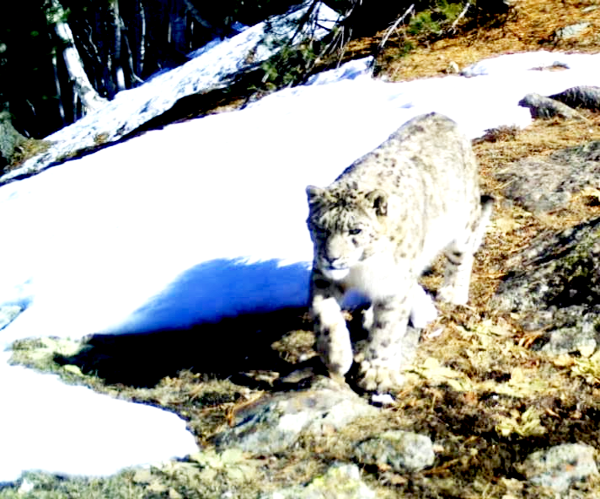
DOGRA HERALD BUREAU
KISHTWAR, Dec 22
A recent comprehensive survey conducted by a team of conservationists and researchers has unveiled Kishtwar High Altitude National Park and South Eastern Paddar as critical habitats for the endangered Snow Leopard in India.
The research team comprising Dr. Pankaj Chandan (NDF- Jammu) and Dr Muneeb (NCF-Mysore) has worked in collaboration with the Department of Wildlife Protection and under the guidance of Dr Neeraj Sharma (Incharge Institute of Mountain & Environment Jammu University, Bhaderwah Campus) and close supervision of Dr. Tariq Shah (Research Associate Wildlife Department). Snow Leopards, classified as a threatened species, find refuge in mountain habitats across Central Asia, including the Himalayan Mountain ranges spanning 12 countries. These elusive cats predominantly prey on Ibex, Blue Sheep, Marmots, and lagomorphs, showcasing remarkable adaptations for survival in harsh, high-altitude environments. The groundbreaking survey, marking the first-ever comprehensive study of Snow Leopards in Kishtwar, underscores the region’s ecological significance. Utilizing advanced camera trap technology, the study captured a substantial number of Snow Leopards and their prey in their natural habitat, affirming the area’s potential as a pivotal conservation site for these rare felines. Covering two primary areas, Kishtwar High Altitude National Park, Marwah-Dachhan, Kishtwar, and South-eastern Paddar in Kishtwar, the survey meticulously delineated grids for observation. Deploying 278 camera traps across 135 locations revealed the presence of approximately 20 individual Snow Leopards, including an adult with two cubs, confirming breeding within the Kishtwar Snow Leopard population.
While Snow Leopards are found in various regions in India, Kishtwar, after Ladakh, boasts the highest density of these majestic cats. Efforts to estimate the overall population in Kishtwar are ongoing, promising critical insights into Snow Leopard conservation strategies.
The findings not only highlight the urgent need for robust conservation measures to protect Kishtwar’s Snow Leopard habitat but also present an opportunity for responsible ecotourism development. Similar initiatives in Ladakh and other Snow Leopard regions have proven successful, potentially creating employment avenues for local youth as tour guides. This milestone study lays a strong foundation for further surveys aimed at accurately estimating Snow Leopard populations in Jammu & Kashmir, crucial for their conservation.
Building upon the initial findings that highlighted the significant presence of these elusive felines, the subsequent surveys have continued to yield encouraging results. The evolving estimation of nearly 100 Snow Leopards within the district emphasizes the critical importance of conserving the habitat and implementing comprehensive conservation measures.
The Wildlife Department, acknowledging the importance of these findings, calls for collaborative efforts among government bodies, conservation organizations, and local communities to safeguard Kishtwar’s Snow Leopard population.
The discovery of a thriving Snow Leopard population in Kishtwar not only reaffirms its significance as a conservation stronghold but also opens doors to showcasing its biodiversity through sustainable ecotourism initiatives.
Together, by protecting these iconic species and embracing responsible tourism, we can ensure a future where humans and wildlife thrive in harmony.


























